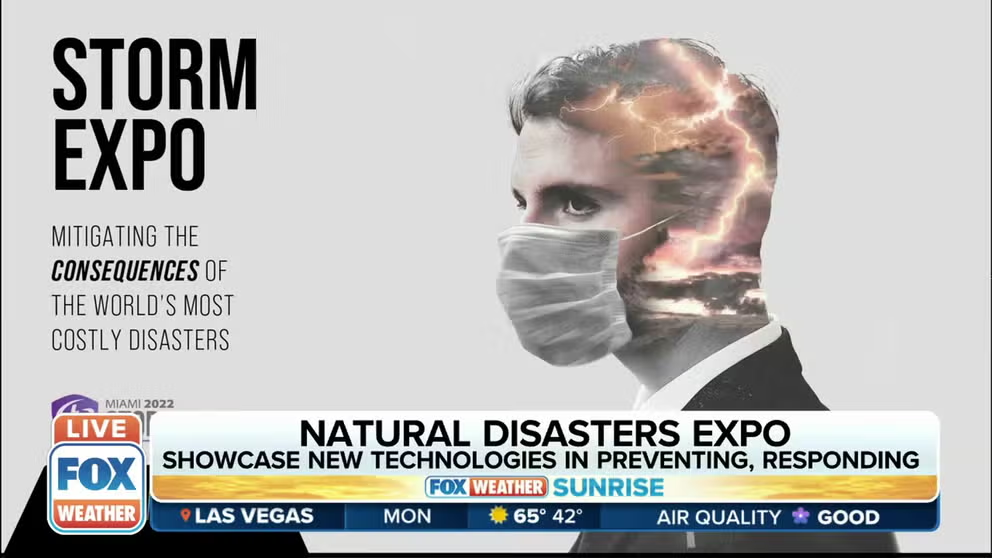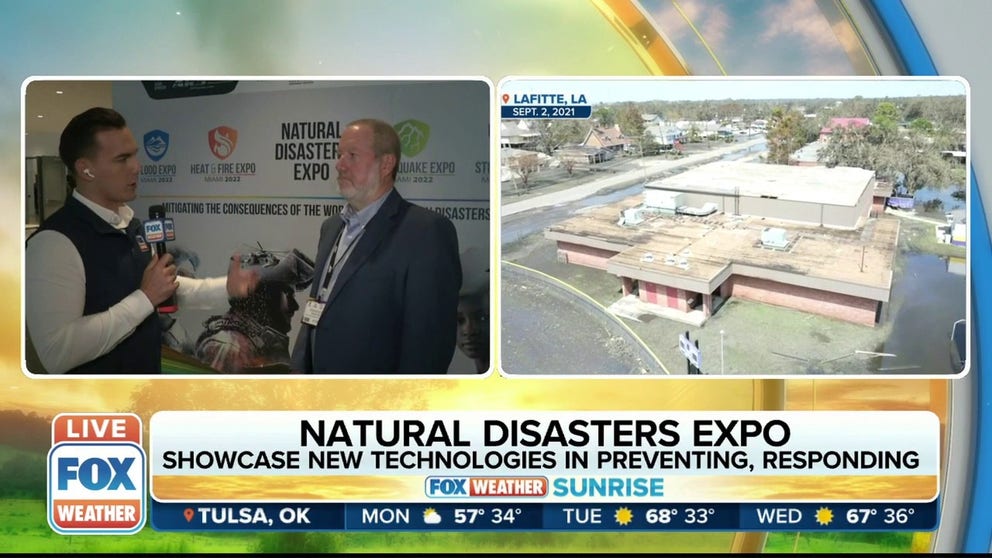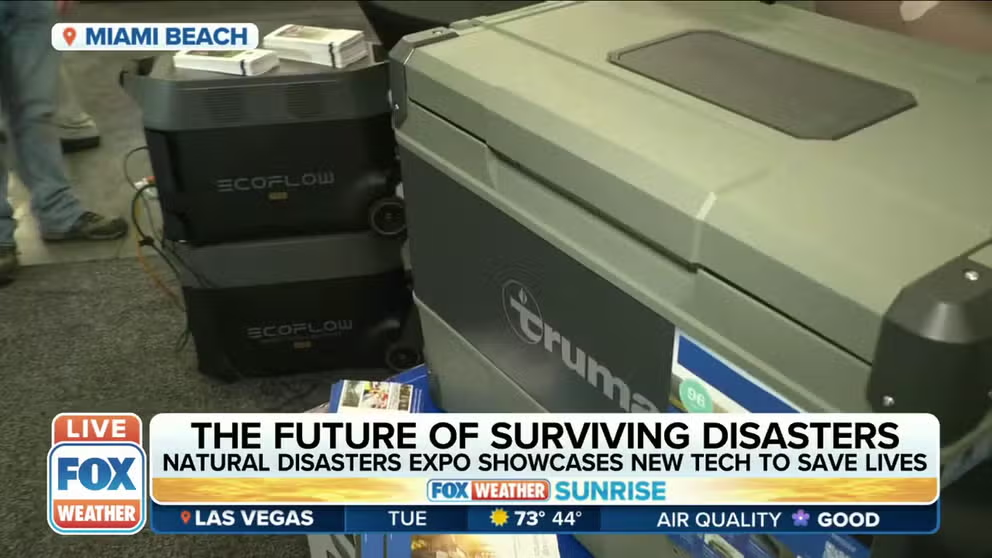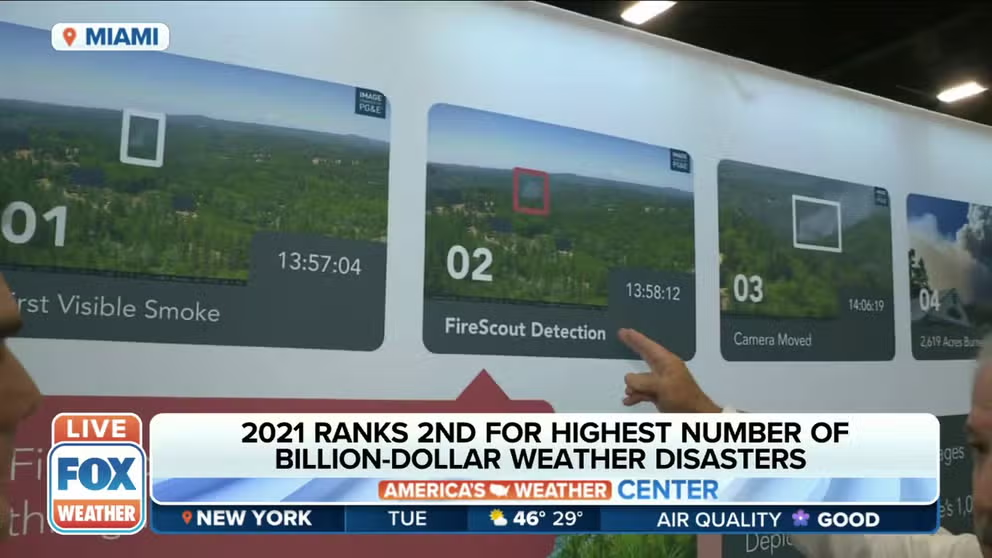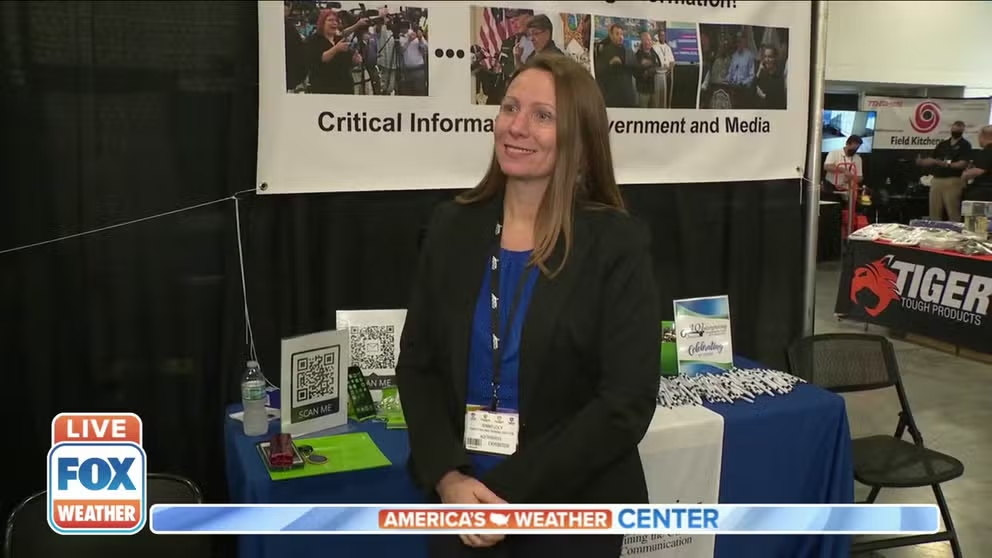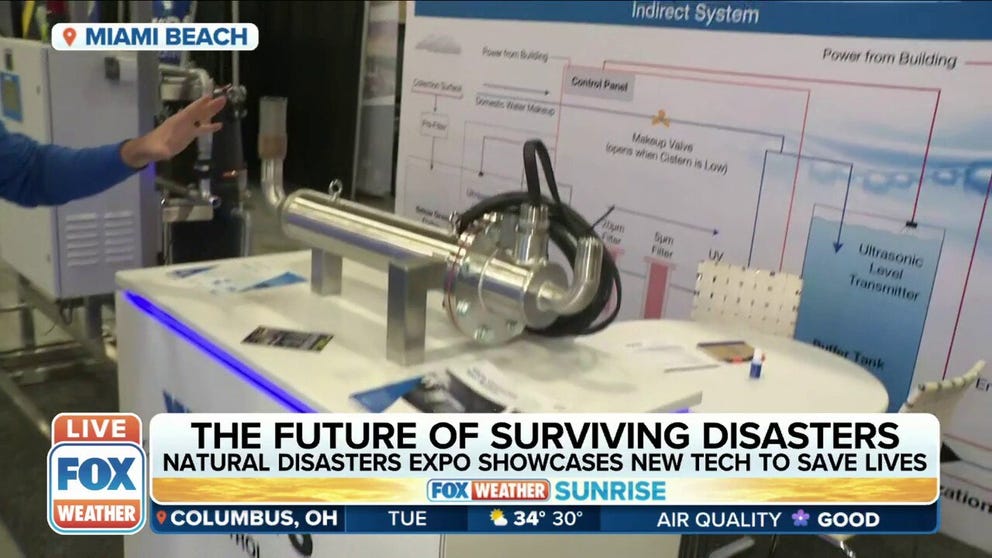5 big takeaways from the Natural Disasters Expo in Florida
Using AI to fight wildfires, flood mitigation and hurricane forecasting were important highlights from Miami Beach this week
Expo to showcase new technologies in preventing, responding to natural disasters
Innovative thinkers in emergency response and natural disaster preparedness will gather in South Florida for the Natural Disaster Expo this week.
MIAMI BEACH, Fla. – The newest technology in extreme weather and disaster relief was displayed during the Natural Disasters Expo in Florida this week.
The two-day event kicked off Monday with more than 300 disaster-response and mitigation vendors at the 500,000-square-foot Miami Beach Convention Center, along with presentations from officials with FEMA, NOAA and NASA. The event was divided into four categories: heat and fire, earthquakes, flooding and storms.
A team from FOX Weather attended the expo, including Meteorologist Steve Bender, to find out what we could learn about disaster preparedness and prevention. Read on for a look at key takeaways from the event.
Focus on flooding
The importance of the Natural Disasters Expo
FOX Weather correspondent Steve Bender is in Miami, Florida, where he spoke to Roderick Scott, with the Flood Mitigation Industry Association, who explained the importance of the Natural Disasters Expo.
According to NOAA, 2021 saw 20 natural disasters that resulted in more than a billion dollars in damage, including five major hurricanes, more than 100 tornadoes, the freeze in Texas and wildfires.
Flooding is an important topic in South Florida, where rainfall and rising sea levels cause roadways to regularly flood.
Roderick Scott, with the Flood Mitigation Industry Association, said hundreds of thousands of buildings in South Florida are at risk of flooding. The association is forming a workgroup to build better buildings to avoid flooding risks and improve ones already seeing those impacts.
"We've got to get them to where they don't flood. We can't stop flooding. We're not that industry. We know how to make buildings so they don't get flooded," Scott said.
Lifesaving technology
Multiple technology vendors at the expo were dedicated to restoring resources after a natural disaster.
How these drones, generators help after a natural disaster
These drones and generators help after a natural disaster.
Michael Den Hartog with Everything Lifesaving showed FOX Weather's Steve Bender how the Ecoflow system generator could be used to power drones and other equipment during search and rescue operations while saving fuel and using solar power. The system adapts, killing power to equipment when needed and driving the energy to other equipment.
Detecting wildfires with AI
Wildfires around the country burned more than 7 million acres in 2021. Detecting wildfires as soon as they start is key to evacuations and the firefight.
FireScout is an Artificial Intelligence that detects wildfires in minutes using the existing alert systems. With each fire it sees, FireScout can learn and improve.
"Climate change is a major disaster issue with drying out the continents, etc. and anyway we can mitigate that and get on the fire fast is critical," Bow Rogers, FireScout president, said.
THE FUTURE OF WILDFIRE DETECTION IS HERE: ARTIFICIAL INTELLIGENCE
FireScout sees smoke from existing cameras and alerts first responders.
"The faster you get there, the faster you put it out and not let it become a disaster," Rogers said.
FireScout detects wildfires in minutes, integrates into existing alert systems
FireScout, the leader in AI wildfire detection, will be exhibiting at the Natural Disasters Expo. Robert Grey, Sales Manager at FireScout, shared key insights.
Communicating a natural disaster to everyone
How natural disasters are communicated to deaf and hard of hearing community
Jenny Locy, with AQI Services, on the importance of having an American sign language interpreter on screen during weather emergencies.
A large part of any weather event is conveying the severity of what is coming and communicating relief efforts after the fact to the entire population, including those with different needs.
This week, a team from Absolute Quality Interpreting (AQI) Services was present in Miami Beach at the 2022 Natural Disaster Expo to discuss the importance of including ASL in all disaster coverage.
'NOT JUST THE HANDS:' HOW TO COMMUNICATE NATURAL DISASTERS TO DEAF AND HARD OF HEARING COMMUNITY
It's essential to have an American Sign Language interpreter on TV and to include more than just their hands in the video for an excellent reason. ASL is not just hand signs but also expressions and body language.
"It's very important to provide American Sign Language, and with American Sign Language, so much meaning and grammar are on the face. It's not just on the hands," explained Jenny Locy, AQI marketing and training director, in ASL.
Hurricane forecasting and rainwater recycling
Tropical weather is top-of-mind for Florida.
Examining hurricane technology at the National Disasters Expo
FOX Weather correspondent Steve Bender took a look at some of the hurricane technology at the National Disasters Expo.
Christopher Landsea, branch chief with the National Hurricane Center, said technology has changed the landscape for hurricane forecasting.
"Our track forecasts keep getting better. So right now, the two-day forecast has an error of only 75 miles, and a generation ago, it was 200 miles," Landsea explained. "We're really able to better specify what stretch of the coast, whether it's Florida or elsewhere, is likely to get hit."
Vendors offered solutions for city and state governments for significant disaster response and your everyday homeowner.
The technology behind Watts RainCycle is one way that homeowners can harvest, clean and re-use rainwater. This could prevent rainwater from carrying harmful fertilizers from your yard into Florida's waterways that ultimately create toxic red tides.
